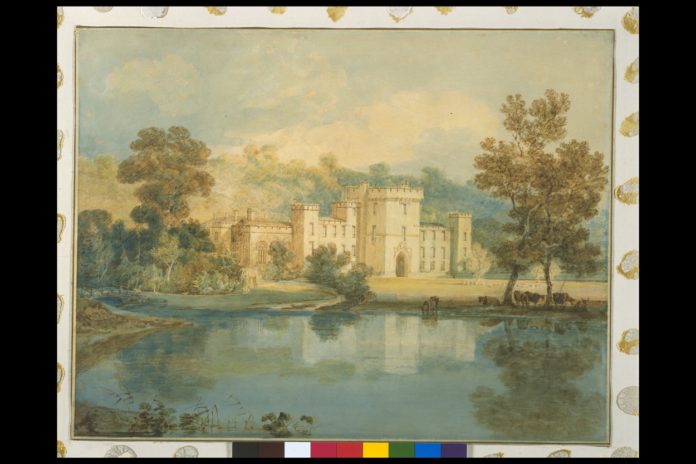On the day that Britain leaves Europe the Whitworth opens Utopias – an exhibition that playfully and provocatively ask how myth, memory and nostalgia have informed what a British utopia looks like in the nation’s popular imagination.
Artists include Jenny Holzer, Grayson Perry, Nathan Coley, Stephen Walter, Paul Scott, Langlands & Bell, William Hogarth, Samuel Palmer, Timorous Beasties, JMW Turner, John Constable, Gwendolen Mary Raveret, Thomas Gainsborough, John Sell Cotman, Madge Gill, George Clausen and Walter Crane.
In his seminal book Utopia (1516), Thomas More gave name and form to an idea that captured the human imagination – that of aspiring to an ideal future, an improved world, a better society.
More’s idea of an island free of external authority and dependency lives on – such convictions played a central role in Britain’s exit from the EU. Both the leave and remain sides envisioned utopias in their campaigns – and they are and always have been less about Europe and more about how British people envision themselves and their country. This offers a glimpse into a divided society in search of a common identity – one that is perceived to have been eroded. Utopia is, at its essence, about creating a perfect world, yet in this way, it is always in opposition with the present.
This exhibition asks how visual culture has perpetuated the fantasy of an idealised national past in Britain and shaped how it looks. Through a combination of idealisation and nostalgia, the visual language of Britain’s landscape and its deep connection with the nation creates distorted narratives of how we have and should live. Utopia is about the future – it is the world we want to live in, yet it is always informed by the past.
By the same token, Britain’s geographic location as an island is a central trope in the nation’s self-image. The island as utopia is long established in the popular imagination – celebrating insularity and independence as venerated national qualities. In the exhibition, islands are presented by cartographers and artists both figuratively and imaginary, probing how island-mentality intercepts with the utopian tendency to look both outwards and inwards at the same time.
In the timeframe of the exhibition, the art of the past and that of the present will live side by side, addressing us in conflicting ways. Through these exchanges, the works of art make a space for the viewer to occupy – to ask how artists have created, confronted and played with singular narratives of a British utopia.
Central to the display, will be a 1516 example of Thomas More’s Utopia (John Rylands Library Collection, The University of Manchester) which will serve as a catalyst for examining the contexts of place and nationhood to ideas of utopia.
As a key part of the exhibition, two emerging artist-in residence positions have been created for artists age 18-24. With support from the Curator, the artists have worked with Whitworth Young Contemporaries to develop an intervention into the exhibition space that uses the Whitworth collection as a point of reference for probing what utopian-thinking looks like for young people today.
List of artists in Whitworth Young Contemporaries intervention: Stephen Willats, Richard Hamilton, Gillian Wearing, Ewan Gibbs, Brendan Neiland, Thomas Robert Way, Christopher Nevinson, Anne Desmet, Serge Delauney, Alexander Georgiou, Frank Healy, Anna Ajkai, Scottie Wilson, Johann Fischer, Iwanska Wladyslawa, Abdelkader Rifi and Madge Gill







